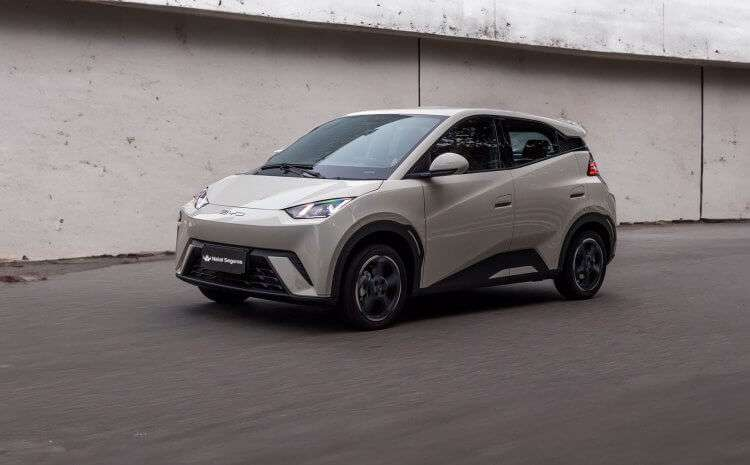In a world where urban transit is synonymous with noise and pollution, BYD’s latest electric bus promises a silent revolution. As cities strive to reduce carbon footprints and embrace sustainable solutions, BYD has positioned itself as a leader in electrifying public transport. With their recent unveiling, BYD’s electric bus is not just a vehicle; it’s a vision of cleaner, smarter cities. This article will explore how BYD’s innovation is setting new benchmarks in urban mobility, what makes this electric bus a game-changer, and how it compares to other electric transit solutions.
BYD’s Breakthrough in Electric Bus Technology
Unveiling the Future of Transit
BYD, a global leader in electric vehicles, recently introduced its latest addition to the electric bus lineup, which promises to redefine urban mobility. With a focus on reducing emissions and enhancing passenger experience, BYD’s new bus is a testament to cutting-edge technology and sustainability. According to a report by Bloomberg Green, the global electric bus market is projected to reach $71 billion by 2027, with BYD poised to capture a significant share thanks to its robust innovation pipeline.
Key Features and Specifications
- Extended Range and Efficiency: The new BYD electric bus boasts an impressive range of up to 250 miles on a single charge, powered by BYD’s proprietary lithium iron phosphate battery technology. This surpasses many competitors in the market, making it ideal for long urban routes without frequent recharging.
-
Advanced Safety Features: Equipped with state-of-the-art safety systems, including automated braking, collision avoidance, and real-time monitoring, the bus ensures passenger safety and driver assistance is at the forefront.
-
Passenger Comfort and Connectivity: With spacious interiors, Wi-Fi connectivity, and ergonomic seating, the bus enhances commuter experience, making public transit more appealing to tech-savvy urban populations.
Charging Infrastructure and Support
Charging infrastructure is crucial for the widespread adoption of electric buses. BYD addresses this by offering a comprehensive suite of charging solutions, including fast chargers that can fully charge the bus in under three hours. Collaborations with municipal governments and private enterprises are expanding charging networks, ensuring that range anxiety becomes a thing of the past.
How BYD Compares to Other Electric Bus Manufacturers
Market Position and Competitors
In the competitive landscape of electric buses, BYD’s main rivals include Proterra, Volvo, and Mercedes-Benz. Each brand offers unique features, but BYD stands out due to its extensive experience and established manufacturing capabilities in the EV sector.
- Proterra: Known for its focus on North American markets, Proterra offers buses with a range of up to 220 miles. However, BYD’s global reach gives it an edge in scaling production and distribution.
-
Volvo: Volvo’s electric buses emphasize luxury and passenger comfort. While they are popular in Europe, BYD’s cost-effective solutions make it more accessible to developing markets.
-
Mercedes-Benz: With a strong emphasis on innovation, Mercedes-Benz electric buses offer advanced AI features. BYD’s focus remains on practical, scalable solutions, ensuring reliability and affordability.
Pricing and Availability
BYD’s electric buses are competitively priced, making them a viable option for city councils and private operators looking to upgrade their fleet. With manufacturing plants strategically located worldwide, including in China, the U.S., and Europe, BYD ensures timely delivery and local support.
Practical Tips for Urban Planners and Transit Authorities
How to Transition to Electric Buses
- Assess Infrastructure Needs: Evaluate existing charging facilities and plan for upgrades or new installations to support electric bus fleets.
-
Pilot Programs: Initiate small-scale deployments to gather data on performance, efficiency, and passenger feedback before full-scale adoption.
-
Government Incentives: Leverage subsidies and grants available for green transit solutions. Many countries offer financial incentives to ease the transition to electric buses.
Where to Buy and What to Consider
-
Authorized Dealers: Purchase directly from BYD or its authorized dealers to ensure service quality and warranty support.
-
Total Cost of Ownership: Consider not just the upfront cost but also maintenance, operational savings, and environmental benefits.
-
Customization Options: Explore available customizations to meet specific city requirements, from seating configurations to branding opportunities.
Conclusion: The Road Ahead for Urban Transit
BYD’s latest electric bus is more than just a mode of transportation; it’s a catalyst for change in urban transit. As cities worldwide grapple with pollution and congestion, electric buses offer a sustainable, efficient solution. BYD’s commitment to innovation and accessibility ensures that cities of all sizes can benefit from cleaner, quieter, and more reliable public transport.
As we look to the future, the question remains: How quickly will cities adapt to this new era of electric mobility? With advancements like BYD’s electric buses leading the way, the transition to sustainable urban transit seems not only possible but inevitable. Embrace the change, and let’s pave the way for cleaner cities and a healthier planet.
Join the conversation: How do you see electric buses transforming your city? Share your thoughts and experiences in the comments below!

